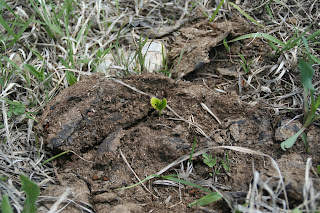Right now, across America, ecologists are receiving unwanted emails from the National Science Foundation. The emails state that their proposals for research were found to have merit, but not recommended for continued consideration for funding. A few months later, more of these emails will be sent out as the field is further winnowed.
Although the funding process is thought of as competitive, it's not the type of competition that improves the competitors.
It's a lottery with too many losers.
The crisis in ecology is clear. We are underinvesting to solve tomorrow’s environmental problems.
The major limitation to advancement of ecological science is funding.
NSF is funding around 5% of the ecological research proposals these days.
That’s probably a factor of 4 too low.
The consequences of this underinvestment may not be clear today, but it doesn’t take much imagination to grasp what they might be.
Already we live in a compromised world. Our climate is warming as greenhouse gases build. Droughts and storms are becoming more severe, more widespread, more intense than ever before. Dead zones in our lakes and oceans destroy fisheries that haven’t already been overharvested. Polluted airs compromise the health of millions. Rising oceans threaten coastal areas. Frozen soils and ice caps are melting. Extinctions continue unabated.
The future of human civilization depends in part on two things. It depends on our ability to understand how ecosystems work. And the ability of our societies to utilize this knowledge.
Our understanding of ecosystem ecology might not dictate whether human civilization will exist, but it will determine the form civilization takes.
And we are underinvesting in our future abilities to solve these problems.
Underinvestment is a political problem. Governments and philanthropic organizations choose where to send scarce resources. There are more than enough resources to invest fully in the science of our environmental problems.
But we don’t.
How much we should invest is not easy.
Politicians are constantly being asked to compare apples and oranges.
But why we underinvest is an important question.
In general, underinvestment can happen when the perceived potential returns on the investment to the investor are exceeded by the costs. Governments invest because external returns can be internalized in ways that often can’t for individual investors.
Despite governments ability to internalize external rewards, we still underinvest in basic research?
Why?
Part of it is that the potential returns are likely undervalued. Not all research returns have a clear dollar amount. In that fog, political calculations are made about potential returns. Some of these political calculations are in the best interests of the nation. Without clear accounting of the potential returns, how best to invest can be guesswork.
Some calculations are political in the sense that they are not made to maximize benefits for the nation, but instead the elected (and those that helped elect them).
Separating the two motives is impossible.
It shouldn’t be attempted.
The arguments are the same regardless of the motive.
What does the criticism look like?
In 2011, Senator Coburn of Oklahoma released a report "Under the Microscope". The report detailed expenditures by the National Science Foundation that were considered by the senator to be wasteful or mismanaged.
The report highlighted individual research projects funded by NSF. These were used as examples of research that was considered "examples of the more than $3 billion in waste and duplication".
The report by and large simply reprinted some of the summaries of individual research projects.
The report highlighted that NSF funds have been used to fund research that has "shrimp walk on tiny treadmills to measure the impact of sickness on crustaceans"
Another example:
“How many birds live in the “hood?” The Cornell University Ornithology Lab has received millions of NSF dollars for “Informal Science Education” purposes.”
Nest cams were held up as obviously wasteful.
These examples are not unique. Ecology is a perennial target.
In 2008, John McCain went after grizzly bear research.
In all, these sound perfectly reasonable to most ecologists, but can sound as wasteful as thousand dollar screwdrivers to the public.
Ecology has done an average job of being reactive to criticism about funding.
It should be noted that there have been some nuanced responses like this or this. Michael Mann's responses to criticism has always stood out as something to emulate.
Yet, ecology (and related disciplines) have done worse about being proactive.
It’s important to learn how to promote the benefits of investment, so that, regardless of the motive, arguments for underinvestment are untenable.
The goal for ecology has to be to have environmental research be unquestionable.
Like breast cancer
Or military preparedness.
Or infrastructure.
The American Society of Civil Engineers has done an amazing job of structuring the debate on investment.
ASCE has their infrastructure report card. Right on the home page they have a grade for the US and an amount that needs to be invested. National GPA: D+. Amount that needs to be invested $3.6 trillion.
Ecology needs to do the same.
It has to be clear that failing ecosystems are as bad as failing bridges.
And we have to be clear about the level of investment necessary needed to prevent this.
It's not that there hasn't been any effort to do this.
We just haven't invested enough.
I’ll try to expand on some thoughts on how to do this later.






